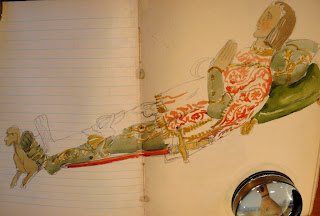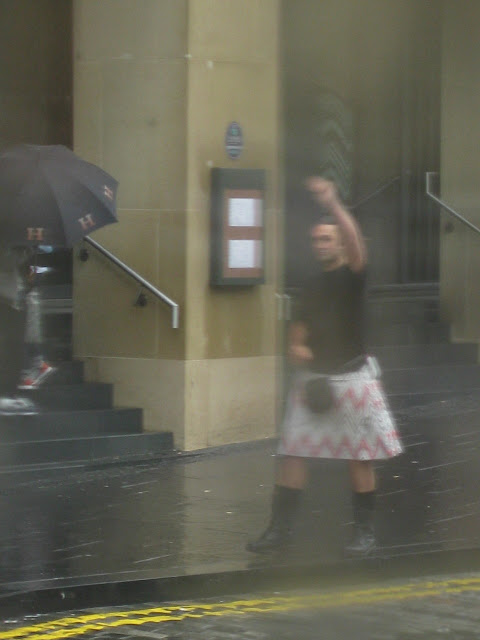US MARINE CORPS RECRUIT DEPOT — PARRIS ISLAND, SOUTH CAROLINA
TEMPS: LO 50F / HI 70F (10C / 21C)
I was awakened to a chant and the sound of footsteps on the pavement. I peered at the clock. It was 5:02a. As I debated getting up to check out the source of the noise, Mui beckoned me from the living room where he had raised the visor a smidge to look out. “I told you they would march by the campground” he said, a big grin on his face. It was pitch dark outside, but we could make out the shadowy movements of a battalion of recruits as they marched pass us, the flashlights of the DIs (drill instructors) stabbing into the night like laser pointers.
Laughing about the unorthodox wake-up call, we proceeded with our day.
Fast forward to 8:30a when chants and heavy footsteps once again broke through the quiet morning. I wasn’t quite dressed to go out in public, but I was prepared with an alternate plan. I shoved the camera into Mui’s hands and sent him outside to take photos as the recruits marched by. Thirty minutes later, the recruits were back, hunched over from the weight of the gear on their backs and visibly weary — but determined, too. This time I managed to get out and take a few photos myself ;-)

The battalion of recruits march by a third time; they stretch the length of the road!
Still photos just can’t do justice to the scene, so here’s a 19 second video to share what we saw and heard.
By 10:00a the sun had broken through the overcast and the temp had risen to a comfy 60F (15.5C) — perfect weather for a trike ride. An hour later, we were heading out on a meandering ride that took us by dried-up wetlands and stands of oak trees draped with Spanish moss.

beautiful morning … beautiful oak trees … and empty roads for our trike ride.
There wasn’t a bike path per se, but the roads were all but empty, and being on base, the few vehicles we encountered were not only driving well within the speed limit — 25-35 mph (40-55 kph) — but were very courteous and gave us a wide berth.
Having fun with the reserved parking signage; guess who’s got the spot with the higher rank!

The MCRD is serious about its mission; these words can be found all over the base.
Eventually we found ourselves at the Parris Island Museum on Panama Street. Chaining the trikes to the railings on either side of the entrance, we went in for a quick look-see (free; open to the public — see visiting guidelines on the museum website).
The museum is housed in the War Memorial Building, which was built in 1951 as a “monument to Marines of the past and a source of inspiration for the future.” As might be expected, the exhibits are primarily focused on the Marine Corps, but there is a wing dedicated to the local history of the Lowcountry (as this area is known). Small in size, the museum has plenty of displays to keep military — especially Marine Corps — history buffs busy for hours. For us, it was an interesting, but short detour.

Mannequins are dressed in the uniforms of the Marine Corps through the ages.
Left to right in the top right photo: Continental Marine (1775-1783); Tripoli (1801-1805);
War of 1812 (1812-1814); Mexican War (1846-1848); Civil War (1861-1865); Spanish American War
(1898); Banana Wars (1910s-1930s); WWI (1917-1918); WWII (1941-1945); Korean War (1950-1953);
Vietnam (1964-1975); Gulf War (1991).

Just a couple of the exhibits in the Parris Island Museum.
As we were wrapping up our visit to the museum, a rush of footsteps and a flurry of hearty “aye, sir” responses alerted us to the presence of a platoon forming up at the entrance. Standing at attention, their water canteens positioned just so, they listened as one of the DIs gave them the ground rules for the museum visit before filing inside in an orderly fashion. This was our cue to exit.

A marine corps style field trip!
(SO funny to see the recruits in formation between our trikes.)
After checking the base map on the sidewalk to get our bearings, we decided to continue east towards the Beaufort River. A bench on a fishing pier served nicely as a place to eat our snacks before we retraced our path back to the campground. A quick stop at the Peatross Parade Deck to check out the Iwo Jima Memorial completed our exploration of the MCRD.
The Iwo Jima Memorial is dedicated to all personnel of the United States Marine Corps
who have died in the defense of their country since 1775. This is a replica of
the massive sculpture by Felix de Weldon in Arlington, Virginia. The design was based
on the iconic photo, Raising the Flag on Iwo Jima, taken during the Battle of Iwo Jima by
Associated Press photographer Joe Rosenthal.
And what was Mui doing while I was photographing the memorial …

… he was watching the goings on at the Peatross Parade Deck.
We wrapped up our four-hour trike ride with a quick stop at the commissary and BX (base exchange; think military shopping mall) before heading home. Pleasantly tired, we thought about sitting outside for a while, but the dropping temps nixed that idea. A cup of hot tea and a couple of the poğaças Mui baked and froze before we left on our journey (post here) hit the spot just right.
Since we won’t have a sewer hook-up at Hunting Island, I did several loads of laundry this afternoon in preparation for tomorrow’s move. We’ll empty the tanks before we leave Parris Island to ensure we can survive nine days without having to do an interim move just to use the dump station. This will be the longest we’ve been at a campsite without full hook-ups. We’re up for the challenge, though!
We’ve been getting a strong 4G signal here with our mi-fi/Wilson antenna combo (most of the time). We’re not sure what we’ll find at Hunting Island; worst case, there’s wi-fi at the camp store. Hoping to keep posting … signal strength permitting.
 The illustrations are mainly, but not exclusively, heraldic in nature.
The illustrations are mainly, but not exclusively, heraldic in nature.  They are rough and unfinished,
They are rough and unfinished,
 but have a certain charm.
but have a certain charm. I had decided that it was the work of a male, but then I came across these
I had decided that it was the work of a male, but then I came across these with full and detailed descriptions of the fabrics and styles a couple of pages further on.
with full and detailed descriptions of the fabrics and styles a couple of pages further on. I love these sketches.
I love these sketches. Several sheets of this headed notepaper were tucked into the book, most with little sketches on the reverse. I wonder whether this was the father to H. L. Atkinson. So far my dabbles into research have produced nothing of any great interest. Except for this
Several sheets of this headed notepaper were tucked into the book, most with little sketches on the reverse. I wonder whether this was the father to H. L. Atkinson. So far my dabbles into research have produced nothing of any great interest. Except for this






























